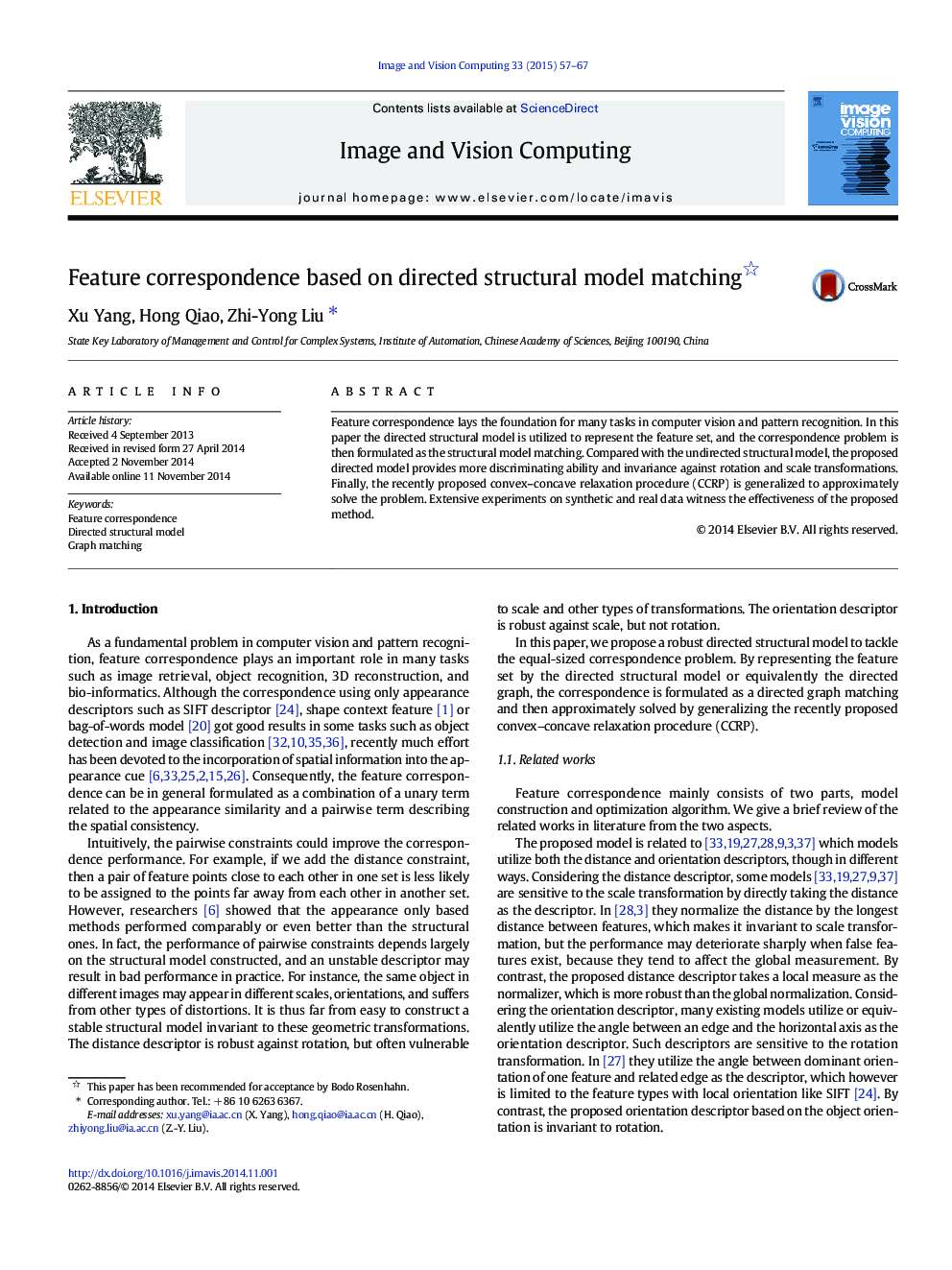| Article ID | Journal | Published Year | Pages | File Type |
|---|---|---|---|---|
| 526836 | Image and Vision Computing | 2015 | 11 Pages |
•A directed structural model is proposed for feature correspondence.•It provides more discriminating ability than commonly used undirected model.•The feature correspondence is casted as a “directed structural matching” problem.•The convex–concave relaxation procedure (CCRP) is generalized to solve the problem.
Feature correspondence lays the foundation for many tasks in computer vision and pattern recognition. In this paper the directed structural model is utilized to represent the feature set, and the correspondence problem is then formulated as the structural model matching. Compared with the undirected structural model, the proposed directed model provides more discriminating ability and invariance against rotation and scale transformations. Finally, the recently proposed convex–concave relaxation procedure (CCRP) is generalized to approximately solve the problem. Extensive experiments on synthetic and real data witness the effectiveness of the proposed method.
